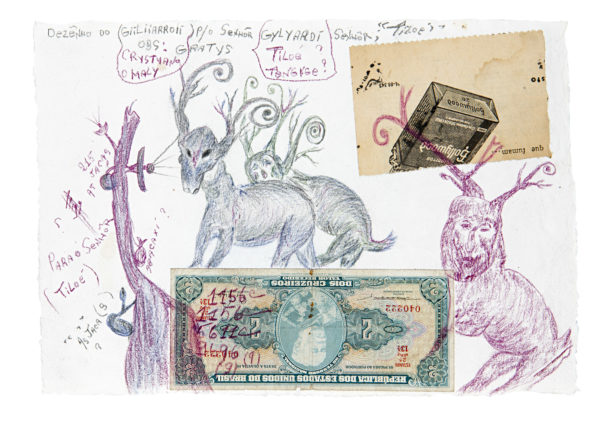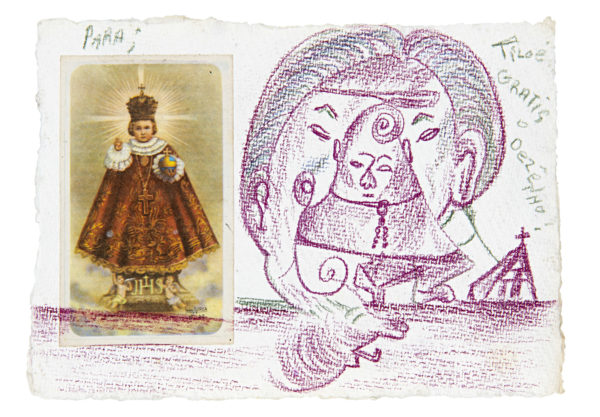Much uncertainty surrounds the biography of Jesuys Crystiano. A court arbitrarily established the year of his birth as 1950. It is believed that he spent his childhood in Buerarema, in the state of Bahia, and attended school there, and he later moved to Rio de Janeiro as a youth. Crystiano’s life and work are documented only as of 2010. During this time, he was living in the streets of Ilhéus, Bahia, and was cared for by his neighbors. His life changed when a German hotel owner living in the region became interested in the murals that he had drawn on abandoned buildings. This wealthy mansupported Crystiano’s art production and cared for him until Crystiano’s death in 2015. Crystiano created hundreds of drawings in R charcoal and pencil—some in a large format—as well as collages made of photographs from newspapers, books, and found objects, in which formal encounters between the elements present in the photographs and his own drawings seem to have triggered the creation of unreal worlds populated with composite beings and objects (e.g., crowned vultures). Their vertical dimension refers to elevation but also to falling (e.g., overturned tables, uprooted tree trunks), presaging a catastrophe. One of his collages curiously includes a photograph of Fat Chair (1963) by German artist Joseph Beuys (1921–1986). Was it the encounter between organic material and the built form or the inevitable decomposition of the fat that captured Crystiano’s attention?


